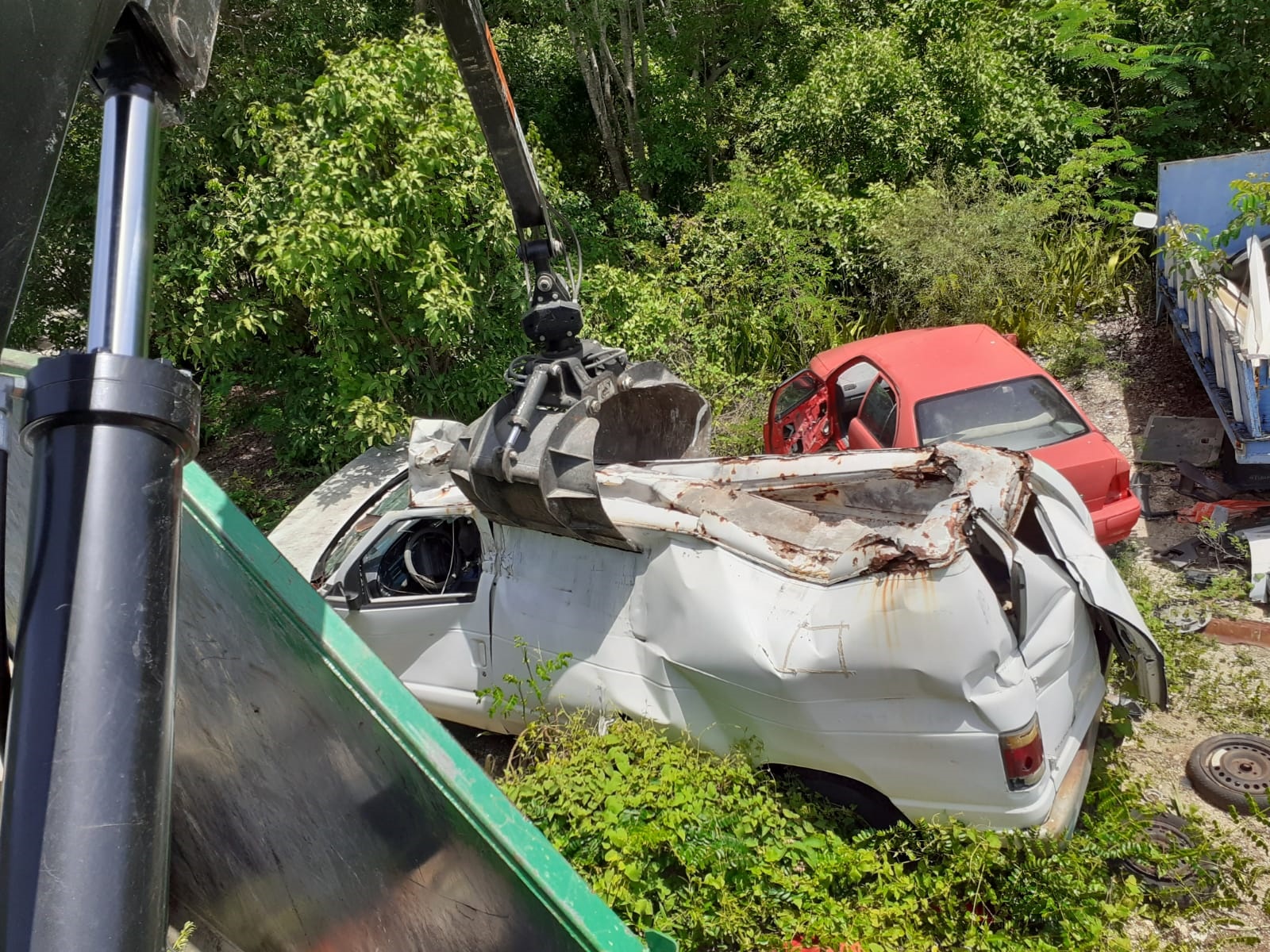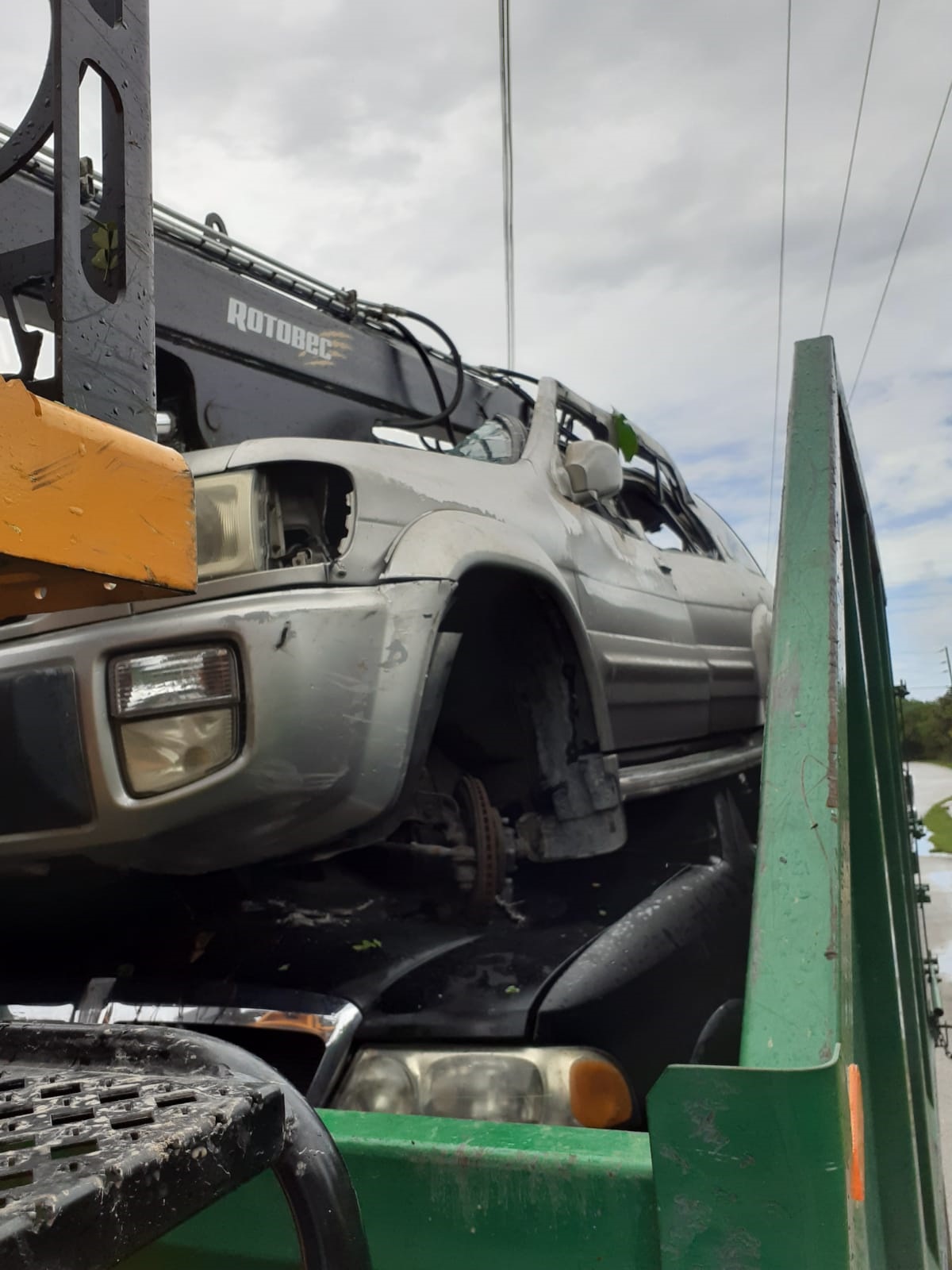Cayman: Cross government effort to eliminate derelict vehicles


At the direction of the Deputy Governor, Hon Franz Manderson, JP, a cross-government innovation team has been assembled to address the issue of derelict vehicles.
The team includes the Department of Environmental Health (DEH), the Royal Cayman Islands Police Service (RCIPS) and the Department of Vehicles and Drivers’ Licensing (DVDL).
This work directly contributes to the achievement of the Government’s Broad Policy Outcomes specifically:
- Stronger Communities and Support for the Most Vulnerable
- Ensuring Caymanians Benefit from a Healthy Environment
“We are aware of the large number of derelict vehicles and have set a goal to reduce the number of derelict vehicles to zero by early 2021. However, it’s an opportune time to remind the public that derelict vehicles are a community problem and every member of our community can help by doing their part. In other countries success rates were highest when both government agencies and the community worked together,” said the Deputy Governor.


Since July 2020 DEH teams have removed more than three hundred (300) derelict vehicles to date.
It is estimated there are still three hundred (300) to three hundred and fifty (350) derelict cars across the island.
Derelict and abandoned vehicles fall within larger set of problems involving motor vehicle regulation, social disorder, the attraction of rodents who may spread disease and the illegal disposal of bulky, hazardous waste as well as the harm caused to the environment and the people who are exposed to them.
The Director of DEH, Mr Richard Simms reminds the public of section 8 of the Litter Law (1997 Revision) that states, “where a derelict vehicle is left or caused to be left in a public place in such circumstances as to cause, contribute to or tend to the defacement thereof, an officer shall give notice to the person so leaving or causing the same to be left requiring him, within twenty-four hours of such notice, to remove the derelict vehicle so as to restore the public place to a condition satisfactory to the officer.”
In other words a derelict vehicle must be in a public place, have signs of damage or missing parts including windows, tyres, etc and must be expired in registration for 6 months or more.
“It is safer and cheaper to have a car that has reached the end of its serviceable life safely removed from the community. DEH will remove a derelict vehicle for $75 per vehicle. That cost is very low in comparison to the dangers that these vehicles cause to our environment and to our health; especially the most vulnerable. We all know that our health and our environment are intrinsically linked. We must work together to protect our islands,” said Mr Winston Sutherland, Director Management Support Unit, who is heading up the team.
To report a derelict vehicle call: 949.6696 or email DEHcustomerservice.gov.ky
Note :
Section 2 of the Litter Law defines a “derelict vehicle” as, a vehicle that appears to an officer, by reason of its condition, to have been abandoned:
Provided that the opinion of an officer shall be prima facie evidence of the truth of the matters therein contained, and the officer, in forming an opinion, may, if he thinks fit, take into account- (i) the fact that the wheels or any of them, the engine or other parts, have been removed; and (ii) any other factors, taken together with the fact that the vehicle was unlicensed during the immediately preceding period of six months;
The Traffic Law also addresses abandoned vehicles under section 113 (1) (a) which states that, “where it appears to a constable that a vehicle has been abandoned; the constable may take charge of that vehicle and drive or tow it off or cause it to be driven or towed to a place authorized by the Commissioner to be used as a vehicle pound (which power is by this provision conferred) or to any other place considered by the Commissioner to be appropriate.
Once a vehicle is impound by the RCIPS. There is a $10 per day for a vehicle stored in a vehicle pound.





